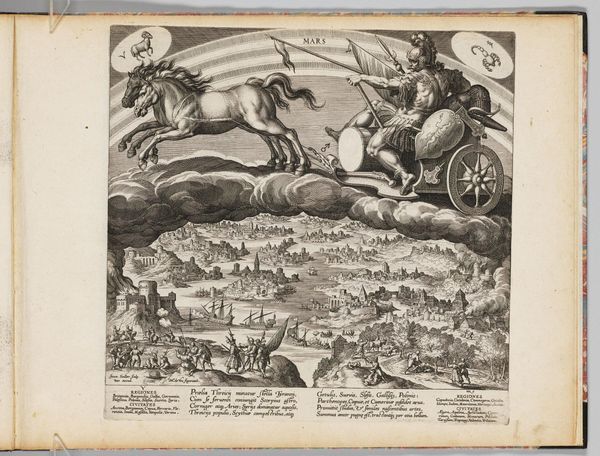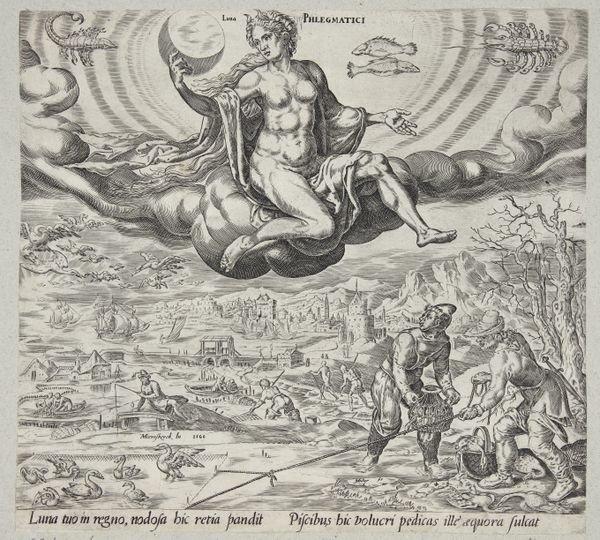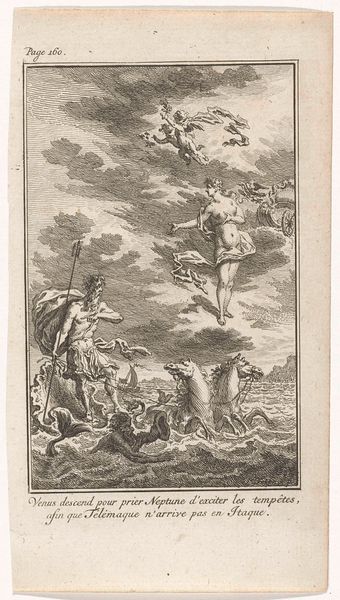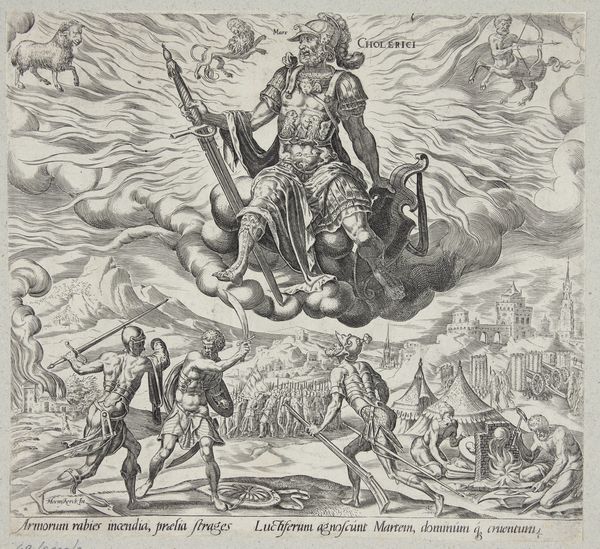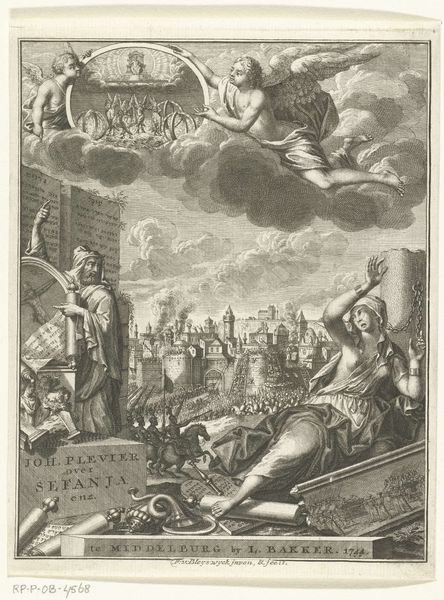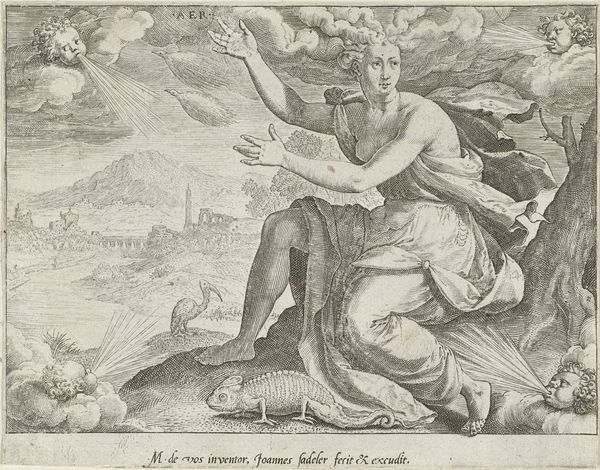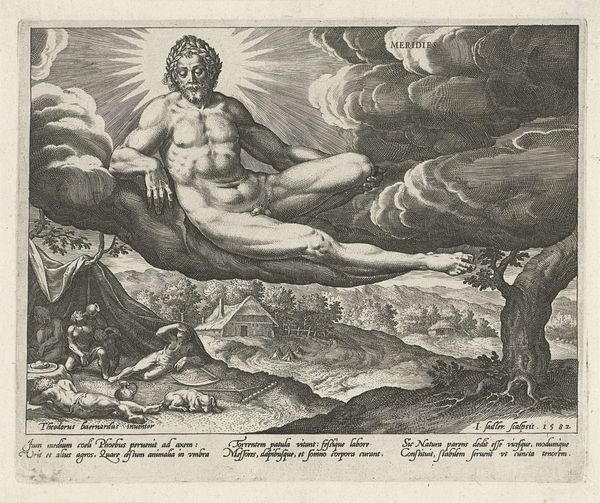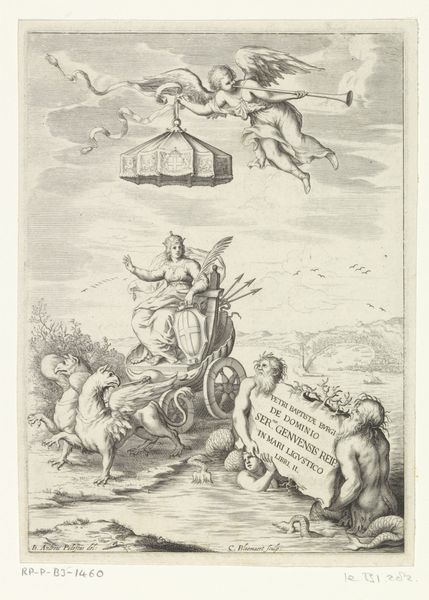
print, engraving
#
allegory
# print
#
landscape
#
figuration
#
11_renaissance
#
line
#
history-painting
#
northern-renaissance
#
engraving
Dimensions: height 93 mm, width 140 mm
Copyright: Rijks Museum: Open Domain
Curator: This print is titled "Virtues Interceding for the Bride," crafted in 1574 by Wierix. It is currently housed in the Rijksmuseum. The artwork, an engraving, beautifully uses line work. Editor: Whoa, talk about a Renaissance head trip! It’s like a metaphysical travel poster. Seriously, though, it's striking, ethereal almost. So many layers and that central figure looks more trapped than blessed. Curator: That is an interesting way to see it. This print isn’t necessarily trying to be straightforward; it presents an allegory, with virtues acting on behalf of the bride. Note the figure in the lower right corner labeled "Sponsa", the bride herself. Editor: Okay, I can get behind the allegory part. The floating figures up top—I’m guessing they represent virtues? Feels like they're coming out of a dream cloud—or maybe trying to break free. I find the juxtaposition with the detailed city background quite strange. Curator: Absolutely. The floating figures of course depict virtues like "Scientia" (Knowledge), Fides (Faith), and Charitas (Charity). Wierix positions them dynamically, as if intervening on behalf of the bride depicted on the terrestrial plane, rooted firmly, weighed down maybe. The composition reflects the social and religious contexts. Prints such as these would be disseminated widely. The engraving also uses an established visual language aimed to teach morals and values. Editor: Right, like a virtuous public service announcement! I dig it. But it’s also kind of subversive, in its own subtle way, isn’t it? Is the goal achieved in the composition? To me, the virtue's intervention seems incomplete—there's definitely still an uncertainty around the figure of the bride. Curator: Well, considering it's a piece intended for reflection on moral virtues and marriage, perhaps uncertainty or incompleteness inspires that reflection, challenging its viewers and inviting a reevaluation of established societal standards. Editor: It’s wild how something made centuries ago can still spark that feeling of, like, "is this all there is?" Makes you wonder what Wierix was really trying to say between all those perfectly etched lines. Curator: Exactly! And why pieces such as these still resonate today. Thank you for these musings. Editor: Thanks! Always happy to overthink some art. It keeps things interesting, you know?
Comments
No comments
Be the first to comment and join the conversation on the ultimate creative platform.

